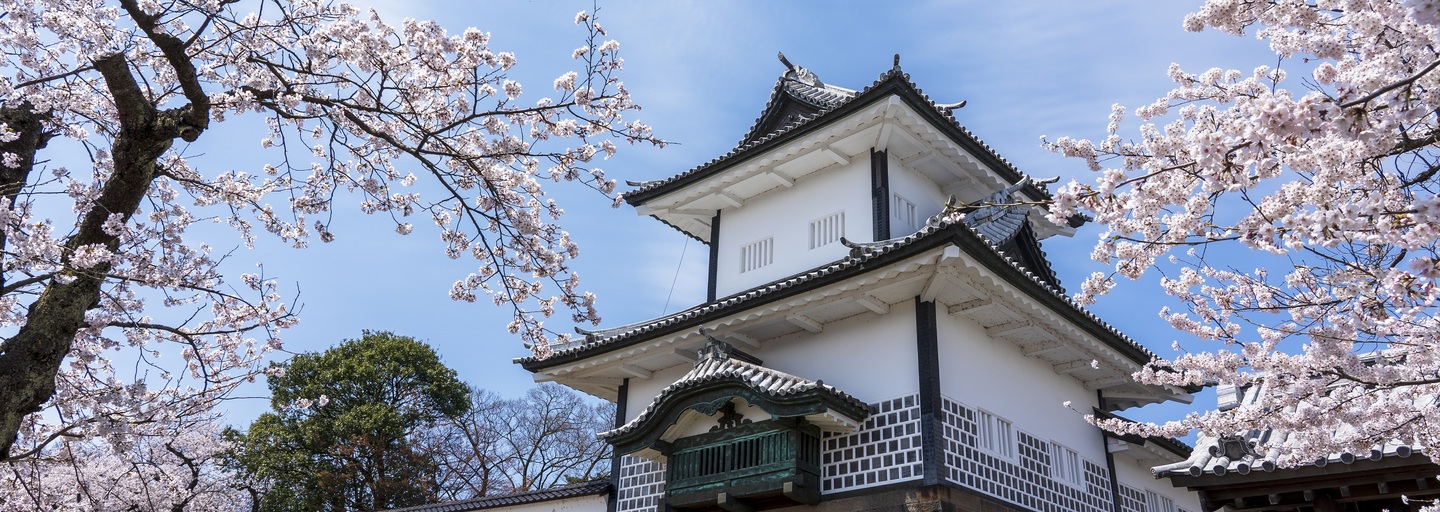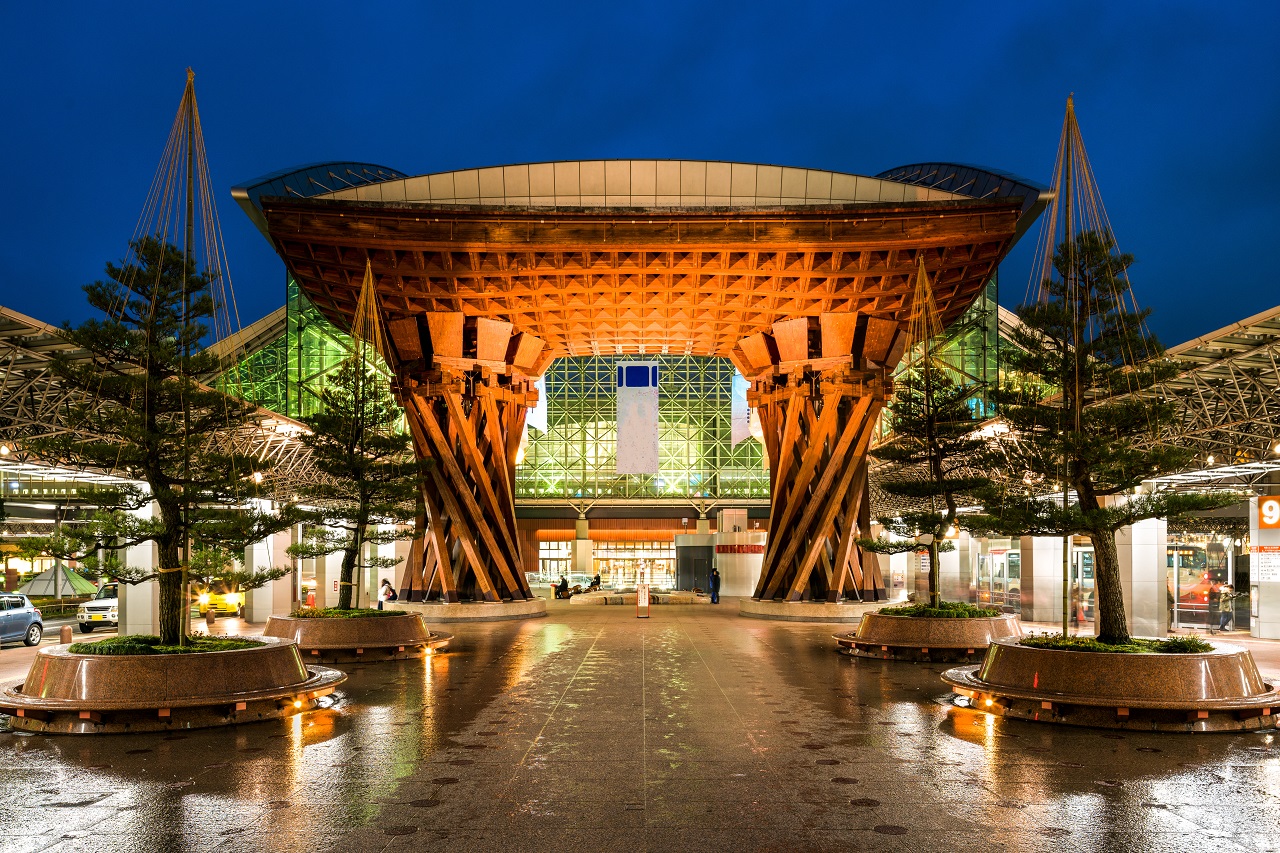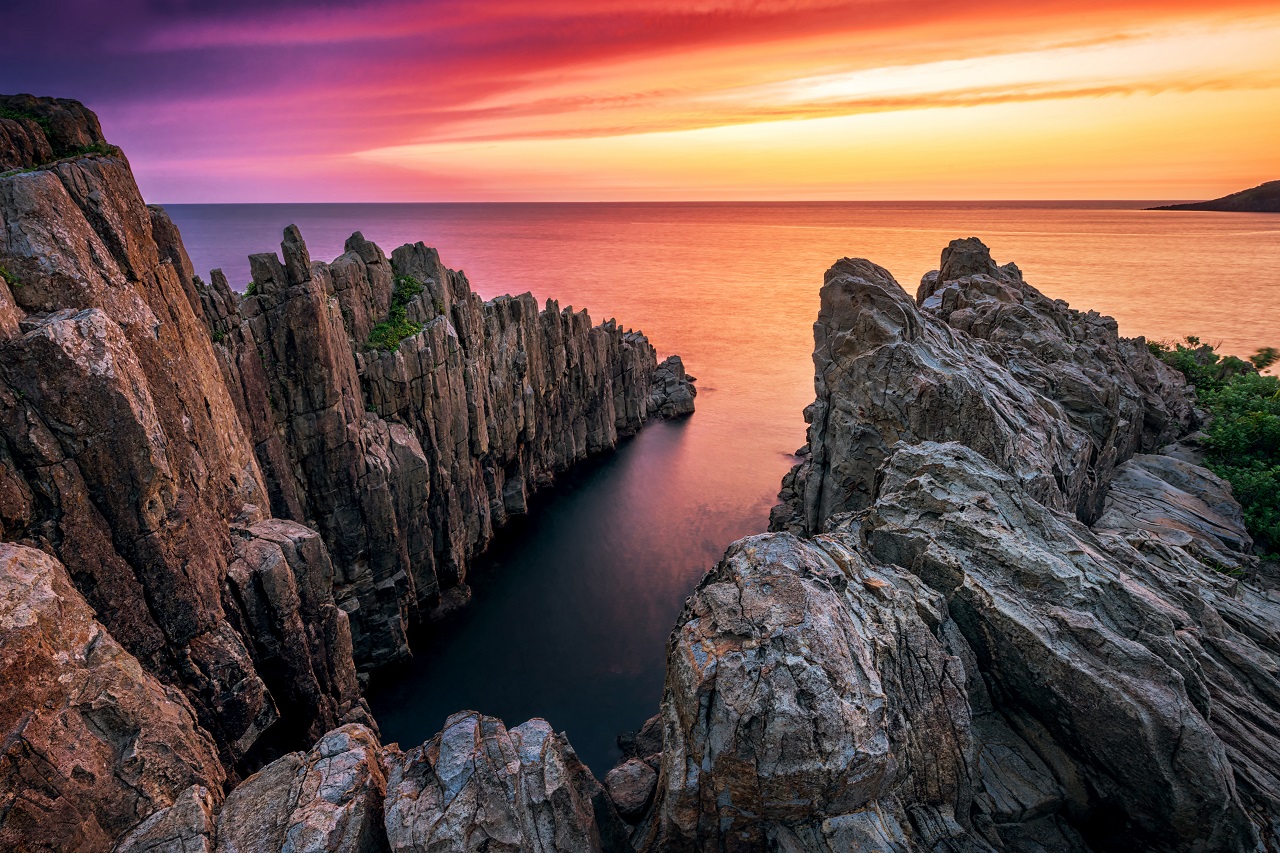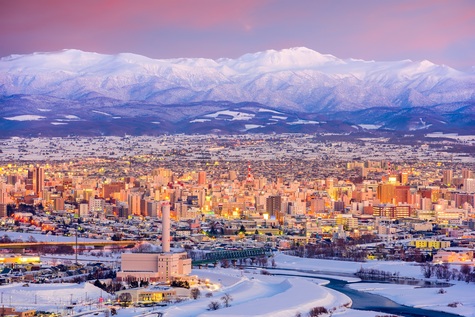
Kanazawa destination guide
Kanazawa destination travel guide - What to do, see and visit in Kanazawa
Table of contents:
Introduction to Kanazawa
Kanazawa is sometimes referred to as “little Kyoto” and a visit here will not disappoint. Although much smaller than the ancient capital, Kanazawa is renowned for its impeccable geisha and samurai districts, one of Japan’s best gardens, interesting museums and wonderful cuisine. This Kanazawa guide will break down the very best things to do and see during your visit. 
Kanazawa is located in the mountainous Hokuriku region and for decades has been notoriously difficult to reach. This changed in 2005 with the completion of the Hokuriku Shinkansen line, sending its popularity soaring. Kanazawa is a relatively small, historic city which avoided the bombings of World War II and is known to be one of the best preserved Edo-period cities in Japan. Often considered a stopover, a Kanazawa visit may just take you by complete surprise. The exceptional history blends perfectly with the cities modern, contemporary architecture and atmosphere. The people of Kanazawa are known for being super welcoming and friendly, only adding to the incredibly atmospheric vibe of the city.
Kanazawa, which literally means marsh of gold, is situated on the Sai river, at the river’s mouth on the Sea Of Japan. It is also an important centre of religion. About 500 years ago the Ikko sect of Buddhism set up a religious government with its center at the Kanazawa Gobo Temple, which later became the site of Kanazawa Castle. During the Edo Period (1603 - 1867) the city was controlled by the wealthy Maeda family. During this period, Kanazawa became one of Japan’s most important cities, accumulating great wealth and attracting artisans from all over the country. Kanazawa’s rich artistic traditions have cemented it as a UNESCO City of Crafts and Folk Art. For the next 300 years, Kanazawa would remain under Maeda jurisdiction and much of the city that you see today has been preserved from this time. The famous Kenroku Garden, which was formally part of the Maeda estate, is an exceptional example of Japanese landscape gardening. What began as an ancient silk manufacturing industry also expanded to include cotton, woolen, rayon and nylon textiles. Today, Kanazawa remains a national cultural hotspot. It’s one of the few cities in Japan where you can find traditional arts and crafts, see authentic Geisha performances as well as Japanese Noh theater plays.
Kanazawa Highlights
Tokyo and Kanazawa are connected directly with each other by the JR Hokuriku Shinkansen, making for an easy and enjoyable journey. It will take 2.5 to 3 hours, costs around 14,000 yen and is fully covered by the Japan Rail Pass. Two days is the perfect amount of time to make the most of the Kanazawa sightseeing.
Nagamachi Samurai District

Samurai were the military caste of Japan throughout the 12th century until the 1870’s. The word Samurai means “to serve” and each samurai followed a strict honorary code which described how they should live and die. The position was one of prestige and they were highly regarded throughout Japanese society. The Nagamachi Samurai District contains well-preserved traditional Japanese buildings, some are turned into museums where you can walk inside and see how real samurais lived. Spend an afternoon wandering the authentic streets to take a glimpse into the past of this important part of Japanese culture.
Kenroku-en Garden

No Kanazawa tourism list is complete without a trip to Kenroku-en. Whether you’re a garden fanatic or not, everyone can appreciate the beauty and care that has gone into the design and upkeep of the garden. Boasting a large pond, several panoramic views and the oldest fountain in Japan, pack a picnic and enjoy a stroll through the expansive grounds.
Omicho Market
Omicho Market, nicknamed ‘Kanazawa’s Kitchen” has been the city's largest fresh food market since the Edo period. You’ll find 186 different stores scattered throughout the lively market where you can pick up local fish, vegetables, sweets and flowers. Make sure you arrive early to make the most of the freshest produce available.
Higashi Chaya Area

Higashi Chaya-Gal is a beautifully preserved historical area of Kanazawa with many traditional wooden buildings. Established in 1820, the historic Chaya Houses were traditional places where geishas would entertain. A chaya house is characterized with a beautiful lattice called “kimusuko” on the outer side of the first floor. The historical rows of this teahouse town have been designated as a cultural asset. Lose yourself in the maze of backstreets and continuous alleys of this gorgeous district of Kanazawa.
Kanazawa Castle Park/Kanazawa Castle
Kanazawa castle is one of the legendary castles of Japan and an important part of Kanazawa tourism. It was also the seat of power of the local Meada clan. It stands amongst impressive grounds in the center of the city and has been partially restored to its original condition after the castle tower was burned down by a fire. Over the years the castle has been used for many purposes such as a Japanese army base and a university campus. Being located directly across from Kenrokuen Garden makes for a convenient combination of sightseeing when planning what to do in Kanazawa.
Things To Do In Kanazawa
Kanazawa is very well set up for making your way around the city by bus with two main shuttles that visit all of the major tourist attractions. Alternatively, if the Kanazawa weather is nice during your visit, the city is compact enough and easily explored on foot or by bicycle. If you plan on using the bus alot, it might make economical sense to get the Hokutetsu One Day Pass which will give you multiple rides for 500 yen.
Kanazawa Station

Originally built in 1898, Kanazawa Station is certainly not your standard railway station building. In 2005 it was completely revamped with a futuristic design, boasting a glass and steel dome and giant wooden gate. This symbol of Kanazawa has become known as one of the most beautiful train stations in Japan and is a stunning greeting when you first step off the train upon arrival.
21st Century Museum of Contemporary Art
The 21st Century Museum of Contemporary Art is an innovative facility which houses several galleries of modern art from famous Japanese artists and artists from around the globe. The modern museum is split over two levels and is based on the concept of a “town square” plan. Their mission is to engage the local community in all forms of arts through interactive installation, permanent collections and temporary exhibitions.
D.T. Suzuki Museum
For those who would like to dive more into the teachings of the important Japanese philosopher, Suzuki Daisetz Teitaro, a visit to the D.T Suzuki Museum is the perfect stop. Suzuki was born in Kanazawa in 1870 and he went on to write over 100 books in English on the subject of Zen Buddhism; his work played a major role in introducing Eastern philosophy to the Western world. The museum is small in size and is well worth a visit to learn more about Zen culture or to take some time to quietly meditate.
Kanazawa Seafood
Seafood lovers, you’re in for a treat! With its close proximity to the Sea of Japan, there’s an array of delectable seafood that you must try when in town. The sushi is of the highest quality and you can be guaranteed it will always be served incredibly fresh. You can also try Kaiden-don, which is a bowl of rice with sashimi on top. During winter, snow crab is often served as a main dish and is delicious either grilled or steamed.
Kanazawa Food
If seafood isn’t your thing, there are still many unique dishes that you can try on your visit to Kanazawa. Jubini is a soy-sauce base stewed with duck meat, shiitake mushroom, Japanese parsley and fu. The thick stew is rich and thick, making it perfect for a colder evening. For an affordable, nutritious option you could try Kanazawa Curry and Rice. Usually served with tonkatsu (breaded pork cutlet) with shredded cabbage, this is a popular dish all around the world. Fuku-ume is a special sweet which you will only find for the New Year in Kanazawa. Fuku-Ume is a Japanese apricot shape and is a symbol of an auspicious occasion.
Side visits from Kanazawa
Noto Peninsula (Ishikawa)

Just a two hour drive from Kanazawa you will find the Noto Peninsula, which makes for a fantastic day trip. Here you will find gorgeous nature, beaches and rich historical culture. Don’t miss the Senmaida Rice Fields, the Kiriko Lantern Museum or the Okunoto Salt Farm Village.
Tojinbo (Fukui)

Attracting up to 1.5 million visitors per year, there’s good reason to include Tojinbo when you visit Kanazawa. The dramatic, 25 meter cliffs are an incredible natural wonder to experience. You can reach Tojinbo within 90 minutes by train and bus from Kanazawa Station.
One of the most fast-growing, iconic tourist hot spots in Japan is 75 minutes from Kanazawa. Known for its traditional farmhouses with huge gassho-zukuri (folding hands) thatched roofs, this unique village is simply magical. No matter the Kanazawa weather, it's absolutely worth a trip to visit this UNESCO World Heritage Site.
So whilst a Kanazawa itinerary is often overlooked when planning a trip throughout Japan, adding this unique city to your visit will not disappoint. It makes for the perfect city break if you want to get away from the crowds of Tokyo, whilst offering everything you would want from a small city in Japan. Interesting history, rich culture, friendly people and fantastic cuisine! While many travellers plan for Kanazawa to be simply a side trip or a stopover, most are surprised by how quickly they fall in love with the atmosphere the city has to offer.
See also

Nikko Destination Guide
Conhecido como um centro de adoração de montanha Shinto e budista por muitos séculos, o Parque Nacional Nikko oferece paisagens montanhosas cênicas, lagos, cachoeiras, fontes termais, macacos selvagens e trilhas para caminhadas

Mt Fuji Destination Guide
O Monte Fuji é um símbolo inconfundível do Japão. Mais do que uma vista bonita, a montanha solitária contribui para a geografia física, cultural e espiritual do Japão.

Kyoto Destination Guide
Kyoto foi historicamente a capital e centro cultural do Japão e possui uma rica história de cultura e tradição. Aprenda sobre as melhores coisas para fazer, ver e experimentar em Kyoto.

Sapporo Destination Guide
Conhecida como uma das cidades mais jovens do Japão, Sapporo é mais famosa por sua cerveja, ramen, caranguejos, esqui e o Festival de Neve de Sapporo anual com enormes esculturas de gelo.